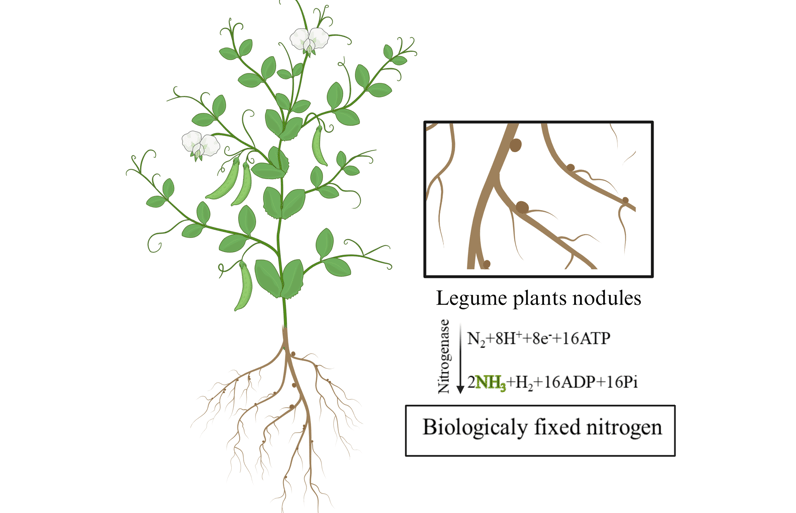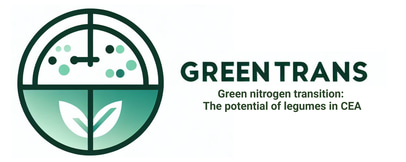Reasearch focus
Scientific studies highlighted that inoculating legumes with Rhizobium strains selected for high nitrogen fixation capacity could improve BFN in hydroponics. Considerable efforts have also been made to improve nodulation by identifying factors influencing interactions between legume roots, rhizobia, and substrate components. Nitrogen fixation efficiency is known not only to be determined by Rhizobium bacteria but also by many environmental factors (e.g., pH, temperature, salinity), and trace elements (e.g., molybdenum, boron), which are important for nitrate reductase initiation (Thilakarathna and Raizada, 2018). Because many factors influence legume root and BFN formation, all possible factors leading to higher nitrogen fixation need to be investigated. Novel approaches proposed by the GreeNTrans project will provide a better understanding of the nitrogen cycle in plants, and the estimation of BFN in plants and hydroponic solutions will help to determine the optimal requirements for growing plants and contribute to safer food to ensure higher product quality, consistent yields for farmers, and safer food for consumers
Symbiotic relationships with Rhizobium bacteria lead to the transformation of unavailable atmospheric N2 into bioavailable N (NH4+) in the roots of leguminous plants, which are assimilated into amino acids to produce proteins by the host plants (Thilakarathna and Raizada, 2018). This makes legumes rich sources of high-quality protein for humans (e.g., peas, lentils, beans) and livestock (e.g., alfalfa, clover, vetch). In various cropping systems, legumes can also enrich the soil through organic nitrogen deposition. The decomposition of residues occurs in two stages. The first stage of decomposition mainly depends on the initial nitrogen content of the residue, and the second stage is relatively slower than the first stage due to N reduction. Field studies showed that nitrogen fixation rates for some legumes approach 30-300 kg N ha-1 per year (Haris et al., 2023; Virk et al., 2022).
However, the ability of legumes to accumulate and release nitrogen in hydroponics in CEA has not yet been deeply investigated. Gao and Cabrera (2023) observed that using currently available decarbonizing nitrogen fertilizer production technologies, by 2050 GHG emissions from fertilizers could be reduced to around one-fifth of current levels. It is important to calculate precisely how much GHG emissions could be saved using optimized biologically fixed nitrogen farms in agriculture. Given that it shortens supply chains, considering it a zero-waste technology, as the plants can be used for both human consumption and animal feed, the roots can be shredded or composted and used in the fields as fertilizer along with the hydroponic solution.


The potential of legumes lies in the symbiotic interaction with Rhizobium bacteria. Rhizobia forms nodules on the roots of the legume and fixes nitrogen from the atmosphere, which the plant can continue to use as a sufficient nitrogen source. As a result, crop yield increases without the use of mineral fertilizers. However, there is an important lack of knowledge about the specifics of legume cultivation in hydroponics. Soybean (Imsande, 1988; Hata and Futamura, 2020) and common beans (Kontopoulou et al., 2015; Kontopoulou et al., 2016; Karavidas et al., 2023) are mostly grown and described in hydroponic systems, but there is very little data on the cultivation of common peas, lentils or other legume family plants. Besides, in most of the conducted studies, the quality and productivity of the plants were explored, but the amount of biologically fixed nitrogen was not considered. Only one scientific publication estimated the amount of BFN in leaves, and it was 49.2 – 54.3 kg per hectare when common beans (Kontopoulou et al., 2017) were grown in hydroponics without synthetic nitrogen. However, the amount of potentially formed nitrogen in the hydroponic solution was not estimated.
